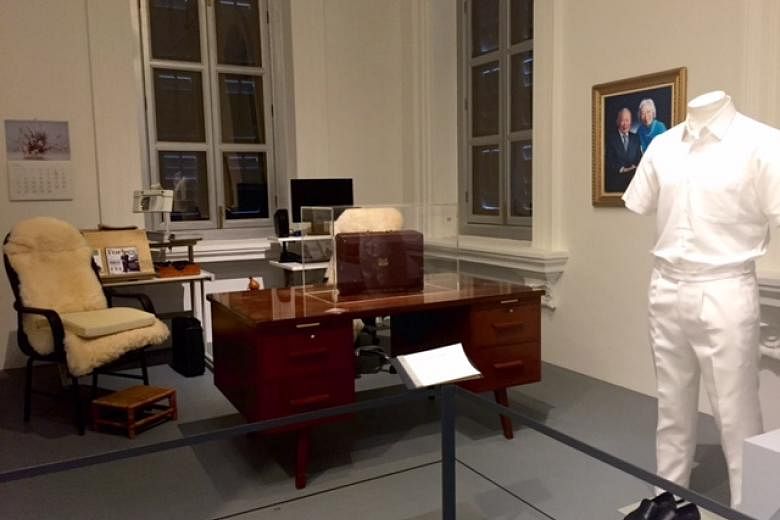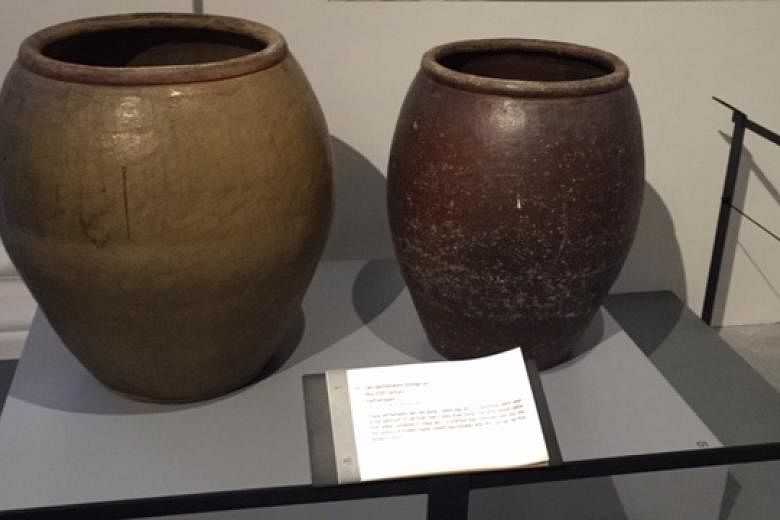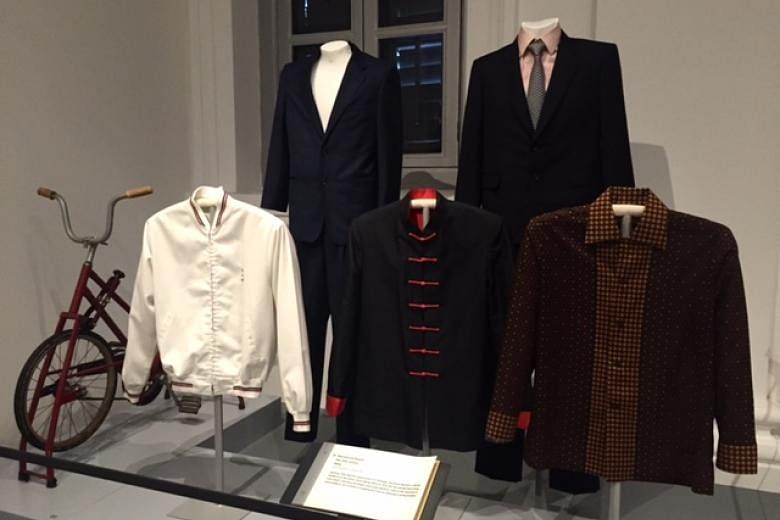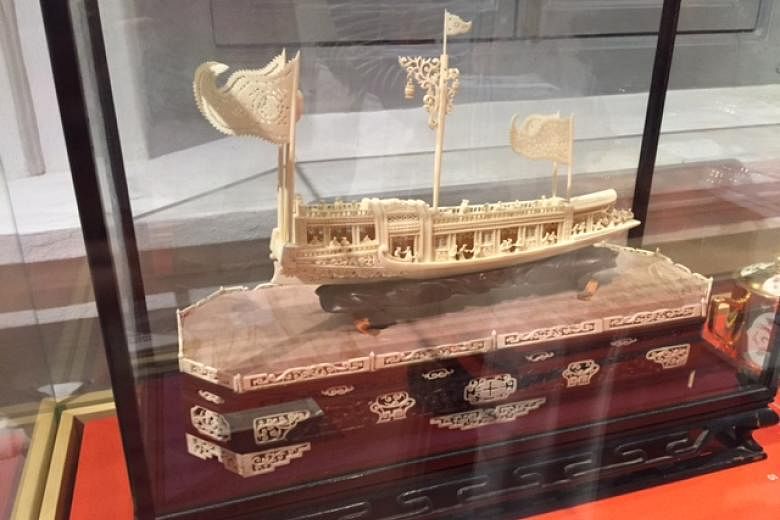SINGAPORE - Singaporeans will be able to get up close to the personal artefacts of the late Mr Lee Kuan Yew at a new exhibition at the National Museum of Singapore chronicling the contributions of the nation's founding team of leaders.
The executors and trustees of Mr Lee's estate, his children, Dr Lee Wei Ling and Mr Lee Hsien Yang, donated a range of items from his home in Oxley Road - where the People's Action Party was founded.
They include a wooden writing table; two tingkat or tiffin carriers used by the Lees; and language books Mr Lee studied, such as a 1951 publication called Malay Sayings and a 1955 copy of Amoy Vernacular.
Also on show is a scale model of the late Mr Lee's 100-year-old pre-war bungalow. It might be the only way for the public to get a glimpse into the historic space and its furnishings since he had said in his will that he wanted his home demolished after his death or when his daughter moves out of it.
Called We Built A Nation, the exhibition details the island's first decade of independence. It will open to the public daily from 10am to 7pm starting Tuesday, for a year. Admission is free for Singaporeans and Permanent Residents.
It is the largest and most thorough showcase of the late Mr Lee's personal artefacts since he died on March 23. About half the 115 artefacts on show are from his estate.
Speaking at the launch of the exhibition, Mr Lee Hsien Yang said the writing desk on display was used as a "shared table where tuition was conducted" for himself, his sister and elder brother Prime Minister Lee Hsien Loong, when they were students.
He recounted how his father had found the time for his role as a "tiger father", having for instance written him a postcard reminding him to "work hard and get better marks than 76" before he set off to Bombay.
"There are some who might blame Singapore's tuition industry on my father. It is true that all three children had extensive after school tuition," he said at the launch.
It later became the late Mr Lee's personal desk.
"I can still picture him in my mind's eyes, regularly working into the wee hours of the morning at this desk - reading, writing, thinking," he added.
On the contributions to the museum, he said it "has been a sacrifice" for his sister Wei Ling, who continues to live at 38 Oxley Road for now. He said the pieces donated are of considerable sentimental value to them.
The other artefacts are from founding leaders including Dr Goh Keng Swee, Mr Othman Wok, Mr Hon Sui Sen and Mr Lim Kim San. This is the first exhibition to hone in on their contributions.
Minister of Culture, Community and Youth Lawrence Wong, who launched the showcase, said the motivation behind it arose after an exhibition in memory of Mr Lee. That exhibition drew large crowds earlier this year and was extended twice.
Mr Wong said the two guiding principles behind it was that it should honour not just one man but the founding generation of leaders, and it should focus on the ideals and values they stood for. These include integrity, country above self, multi-racialism and meritocracy.
"I hope visitors also take time to reflect on the stories behind the artefacts, and how they speak of the values and ideals that underpin the foundations of our nation," said Mr Wong.
The showcase is divided into eight sections: birth of a nation; finance and economy; foreign policy and diplomacy; security and defence; education and language policy; infrastructure; leaders at work; and a section on the late Mr Lee.
Other artefacts from his estate include a model sailing ship presented to him by a Hokkien shopkeeper in Toa Payoh.
The sailing ship - made out of ivory, mother-of-pearl and wood - had taken pride of place in the late Mr Lee's living room. He treasured it because it represented the moment when he could feel the people warming to him and accepting him as their leader following a "gruelling schedule of constituency visits" between December 1962 and September 1963.
He had said: "The faith that these small shopkeepers placed in me inspired me to fight on."
Other highlights at the showcase include a Colt Cobra revolver. The aluminium-clad weapon with a six-round cylinder was issued to Cabinet ministers to protect themselves in Singapore's early tumultuous years.





